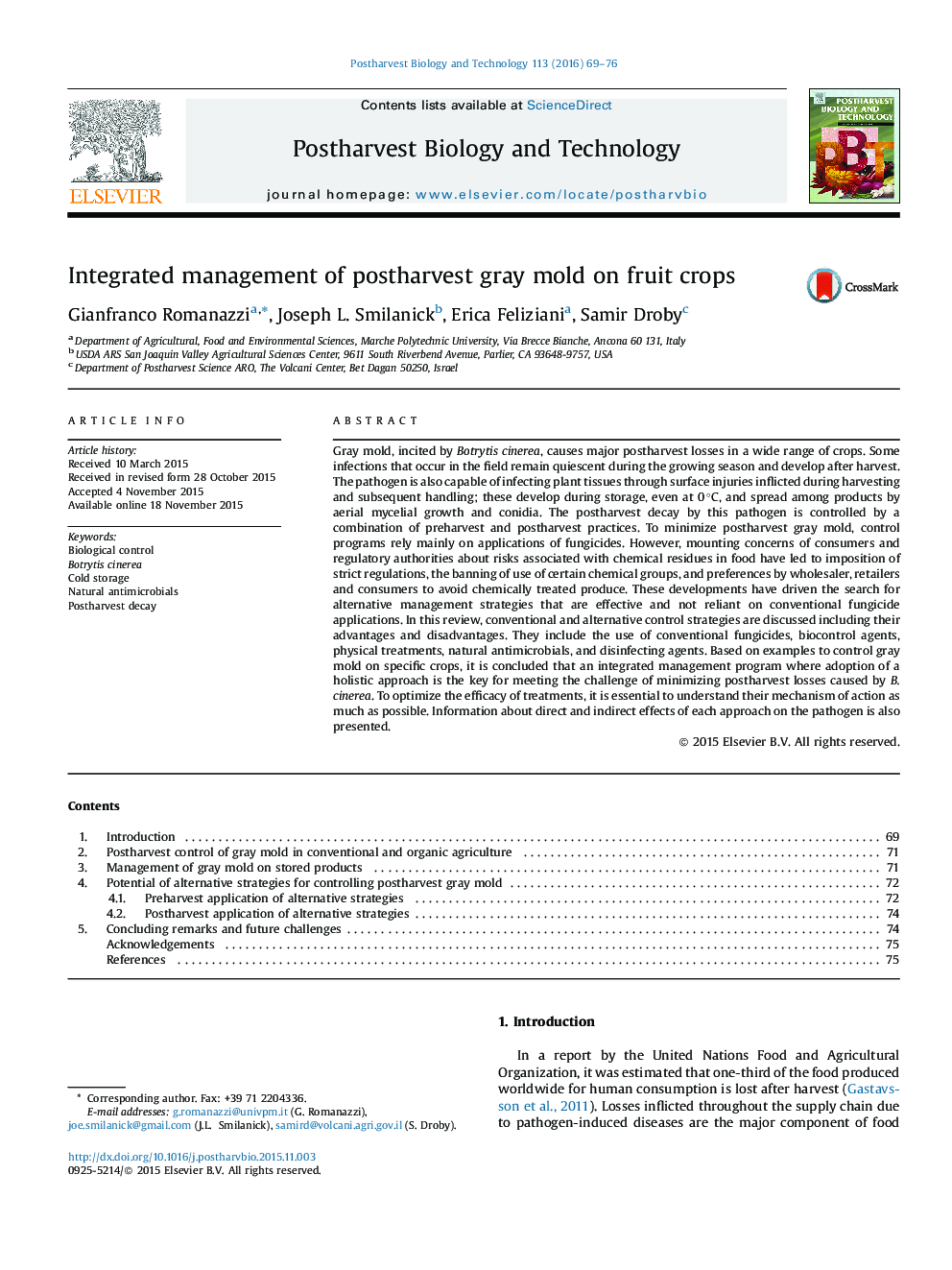| کد مقاله | کد نشریه | سال انتشار | مقاله انگلیسی | نسخه تمام متن |
|---|---|---|---|---|
| 4517838 | 1624981 | 2016 | 8 صفحه PDF | دانلود رایگان |
• Gray mold one of the most important postharvest disease of fresh fruit.
• Disease management requires the use of a series of preharvest and postharvest actions.
• In conventional agriculture, gray mold management relies mainly on fungicide use.
• Interest in developing and commercializing alternative treatments is increasing.
• Losses can be minimized by the integration of preharvest and postharves.
Gray mold, incited by Botrytis cinerea, causes major postharvest losses in a wide range of crops. Some infections that occur in the field remain quiescent during the growing season and develop after harvest. The pathogen is also capable of infecting plant tissues through surface injuries inflicted during harvesting and subsequent handling; these develop during storage, even at 0 °C, and spread among products by aerial mycelial growth and conidia. The postharvest decay by this pathogen is controlled by a combination of preharvest and postharvest practices. To minimize postharvest gray mold, control programs rely mainly on applications of fungicides. However, mounting concerns of consumers and regulatory authorities about risks associated with chemical residues in food have led to imposition of strict regulations, the banning of use of certain chemical groups, and preferences by wholesaler, retailers and consumers to avoid chemically treated produce. These developments have driven the search for alternative management strategies that are effective and not reliant on conventional fungicide applications. In this review, conventional and alternative control strategies are discussed including their advantages and disadvantages. They include the use of conventional fungicides, biocontrol agents, physical treatments, natural antimicrobials, and disinfecting agents. Based on examples to control gray mold on specific crops, it is concluded that an integrated management program where adoption of a holistic approach is the key for meeting the challenge of minimizing postharvest losses caused by B. cinerea. To optimize the efficacy of treatments, it is essential to understand their mechanism of action as much as possible. Information about direct and indirect effects of each approach on the pathogen is also presented.
Figure optionsDownload as PowerPoint slide
Journal: Postharvest Biology and Technology - Volume 113, March 2016, Pages 69–76
